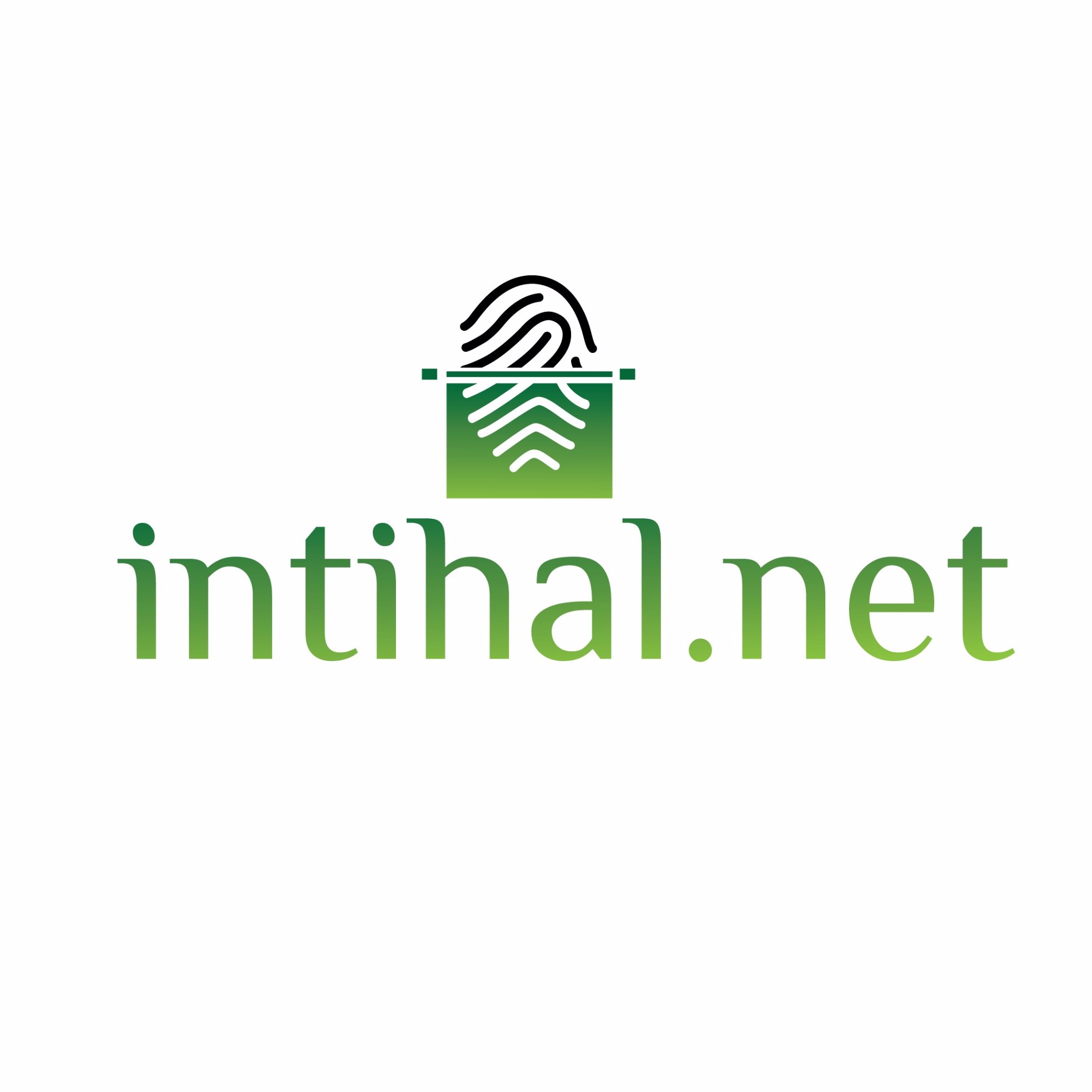Abstract
References
- Abrishami, S., Armineh S., and Doustdar O. (2024). Textile Recycling and Recovery: An Eco- Friendly Perspective on Textile and Garment Industries Challenges Retrieved from https://journals.sagepub.com/doi/10.1177/00405175241247806 on February 5, 2025
- Adeboyejo, A. (2021). The entrepreneurs upcling waste: “my wish is to rid Nigeria of plastics” Footprint magazine 31st March 2021 retrieved from https://www.footprintmag.net on February 5, 2025
- Africa Collect Textiles () Textile Collection for Re-use and Re-cycling in Lagos Nigeria- Final Report: Feasibility Study, Phase 1 Retrieved from https://africacollecttextiles.com on 18/02/2025
- Ajibesin, O. (2023). Unlocking Nigeria’s Future through the Circular Economy Retrieved From www.circularinnovationlab.com on 16/02/2023
- Akanji, M., Amoah, N., Akpoveso, O.T. and Atanya O.I. (2023). A Review of The Circular Economy In Nigeria From Rhetoric to Enterprise Development Retrieved from https://www.researchgate.net/publication/375756000 on 12/02/2025
- Aranda, F.L., Zuniga, M. and Rivas, B.L. (2023). Polymers in Circular Economy: A Comprehensive Approach to Sustainability. An overview. Journal of Chilean Society online version ISSN 0717-9707 retrieved from http://dx.doi.org/10.4067/s0717-97072023000305950 on 9/10/2024
- Aus, R., Moora, H., Vihma, M., Unt, R., Kiisa, M.and Kapur, S. (2021). Designing for circular fashion: integrating upcycling into conventional garment manufacturing processes. Fash Text 8, 34(2021) retrieved from https://doi.org/10.1186/s40691-021-00262-9 on 13/10/2024
- Bayraktaroğlu, S., and İdemen, E. (2024). Redefining repair as a value co-creation process for circular economy: Facilitated do-it-yourself repair. International Journal of Design, 18(1), 1-22 https://doi.org/10.57698/v18i1.01 on Retrieved on 17/10/24
- Chudi-Duru, C. C. (2023). Re-making, Re-cycling and Re-Purposing of Discarded Fabrics and Cloth Wears as Sustainable Entrepreneurship for Wealth Creation Coou African Journal of Environmental Research Vol.4, No. 1, 2023.pp 177-200 Retrieved on 17/02/25
- Delanoeije, J., and Bachus, K. (2020). Reuse The Understudied Circular Economy Strategy retrieved from https://www.researchgate.net/publication/350822893-Reuse-The-understudied-circular-economy-strategy
- Edom, S. (2023). How to Start a Clothing Recycling Business in Nigeria and African Retrieved from https://ayeorganization.com/2023how-to-start-a-clothing-recycling-business-in-nigeria-africa on 18\6/02/2025.
- Ellen MacArthur Foundation https://www.ellenmacarthurfoundation.org Retrieved on 03/02/25
- European parliament (2023). Circular economy: definition, importance and benefits. Retrieved from https://www.europarl.europa.eu on 20/04/2025
- Fibre2Fashion, (2014). Textile Recycling: A Step Towards Sustainability Retrieved from fibre2fashion.com on 06/03/2025
- Hartini, S., Rumita, R. and Al Huda, M.H. (2022). Upcycle strategy on tree branches to improve eco-efficiency towards a circular economy using life cycle assessment. Retrieved from https://iopscience.iop.org/article 21/10/2024
- Haq, U.N., and Rakifull Alam, S. M. (2023). Implementing circular economy principles in the apparel production process: Reusing pre-consumer waste for sustainability of the environment and economy. Retrieved from https://doi.org/10.1016/j.clwas.2023.100108 21/10/2024
- Heras-Saizarbitoria, I., Boiral, O., Testa, F. (2023). Circular Economy at company level: an empirical study based on sustainability reports. Retrieved from https://doi.org/10.1002/sd.2507 21/10/2024
- Jarvis, K. (2023). Is textile recycling greenwashing or an actual waste solution? Here ‘s everything you need to know. Retrieved from https://adropintheoceanshop.com on 25/02/2025
- Kamble, Z., and Behera, B.K. (2021). Upcycling textile wastes: challenges and innovations Textile Progress 53 (2) 65-122 Retrieved https://www.researchgate.net/publication/357729154-Upcycling-textile-waste-challenges-and-innovations on 22/10/2024
- Labayen, J.J, Yuan, Q. and Labayen, I. (2022). A Review on Textile Recycling Practices and Challenges. Retrieved from https://www.researchgate.net/publication/359290082_A_Review_on_Textile_Recycling_Practices_and_Challenges DOI:10.3390/textiles2010010 on 14/03/2025
- Malooly, L. and Daphne, T. (2023). R- Strategies for a Circular Economy. Retrieved on 17/10/24 https://www.circularise.com/blogs/r-strategies-for-a-circular-economy#top
- Nkanta, I. (2024). The Circular Economy as A Pathway to Sustainable Development in Nigeria Retrieved from https://360.rmdc.gov.ng/the-circular-economy-as-a-pathway-to-sustainable-development-in-nigeria/ on 16/02/ 2025
- Sai, A.O., Quansah, S.A. and Acquaye, R. (2022). Recycling Fabric Waste Into Functional Interior Decoration Pieces. Journal of Art and Design. retrieved from www.scipublications.com on 11/02/2025
- Sandin, G. and Peters, G.M. (2018). Environmental Impact of textile Reuse and Recycling- A review. Journal of Cleaner Production. Vol.184, May 2018, pages 353-365
- Simple Ecology (2021). Upcycling and the Textile waste Problem Retrieved from https://www.simplyecology.com/blog/upcycing-and-textile-waste 22/10/2024
- Swarna, P.M. (2023). The Importance of Sustainable Textile Manufacturing (Massachusetts Institute of Technology) downloaded from https://www.linkedin.com/pulse/importance-sustainable-textile-manufacturing-swarna-prabha-mohanty/ 28/10/.2024
- Van der Velden, M., Maitre- Ekern, E. and Wanja, D.K. (2023). The Role of Independent Repair in a circular and Regenerative Economy Retrieved from https://doi.org/10.1007/s43615-023-00304-y on 22/10/2024
- Yu-City (2013). Polyurethane Fabric: What is PU and What is it used for retrieved on 27/10/2024 from https://www.yu-city.com/trends.php?act=view&no=18
- Zhang, L. and Hale, J. (2022). Extending The Lifetime of Clothing Through Repair and Repurpose: An Investigation of Barriers and Enablers in UK Citizens Retrieved from https://www.mdpi.com/2071-1050/14/17/10821 on 16/02/ 2025
An Investigation of How the Circular Economy's Upcycling, Repair, Reuse and Recycling Strategies Might Increase Resource Efficiency and Reduce Fabric Waste Generation in Nigeria
Abstract
Growing fashion trends and the problems of massive waste generation, pollution, and the depletion of natural resources has led to an intense search for alternative ways to obtain raw materials for the production of textiles and other related products. In recent times sustainability have become the focus of attention due to the desire to reduce the use of natural resources and guarantee a healthier environment. Circular economy has appeared as a sustainable solution to this global economic, environmental, and social problem. Globally, the public and business sectors, as well as academia, are becoming more conscious of the circular economy. The circular economy presents a novel strategy aimed at altering our perspective on the creation and consumption of products and services. Nigerians haven't, however, fully benefited from the circular economy. The traditional textile industries operate in a linear fashion, extracting raw materials and using them to make cloth that is then discarded after a short period of time. This method is unsustainable since it produces a lot of garbage. Adoption of the circular economy offers a new model for keeping textile resources in use for as long as possible, resulting in a reduction of the quantity of textile waste generated. This is in response to resource depletion and the environmental pollution that arises from improper disposal of textile waste. The study used a mixed research strategy that included both exploratory and qualitative research. As a useful tool for moving towards a circular economy, the study aims to explore and encourage Nigerians to adopt reuse, repair, recycling and upcycling of textiles strategies. The aim was accomplished by reviewing existing practices on adoption of reuse, repair, upcycling and recycling of textile. Financial and environmental advantages of reusing, repairing, recycling and upcycling of textile were also examined. Waste fabric that was turned into a rope band used to conduct a hands-on investigation of upcycling and worn fabric was recycled into insulated pot holder. Visits was made to churches providing free worn fabric for reuse. Highlighted were the steps involved in weaving a table mat out of leftover fabric and the finished result, a tablemat. The study found that these tactics can be used by both individuals and cooperative organizations to address the issue of environmental pollution, save resources and money, particularly in current difficult economic climate, and provide income for young people without jobs.
References
- Abrishami, S., Armineh S., and Doustdar O. (2024). Textile Recycling and Recovery: An Eco- Friendly Perspective on Textile and Garment Industries Challenges Retrieved from https://journals.sagepub.com/doi/10.1177/00405175241247806 on February 5, 2025
- Adeboyejo, A. (2021). The entrepreneurs upcling waste: “my wish is to rid Nigeria of plastics” Footprint magazine 31st March 2021 retrieved from https://www.footprintmag.net on February 5, 2025
- Africa Collect Textiles () Textile Collection for Re-use and Re-cycling in Lagos Nigeria- Final Report: Feasibility Study, Phase 1 Retrieved from https://africacollecttextiles.com on 18/02/2025
- Ajibesin, O. (2023). Unlocking Nigeria’s Future through the Circular Economy Retrieved From www.circularinnovationlab.com on 16/02/2023
- Akanji, M., Amoah, N., Akpoveso, O.T. and Atanya O.I. (2023). A Review of The Circular Economy In Nigeria From Rhetoric to Enterprise Development Retrieved from https://www.researchgate.net/publication/375756000 on 12/02/2025
- Aranda, F.L., Zuniga, M. and Rivas, B.L. (2023). Polymers in Circular Economy: A Comprehensive Approach to Sustainability. An overview. Journal of Chilean Society online version ISSN 0717-9707 retrieved from http://dx.doi.org/10.4067/s0717-97072023000305950 on 9/10/2024
- Aus, R., Moora, H., Vihma, M., Unt, R., Kiisa, M.and Kapur, S. (2021). Designing for circular fashion: integrating upcycling into conventional garment manufacturing processes. Fash Text 8, 34(2021) retrieved from https://doi.org/10.1186/s40691-021-00262-9 on 13/10/2024
- Bayraktaroğlu, S., and İdemen, E. (2024). Redefining repair as a value co-creation process for circular economy: Facilitated do-it-yourself repair. International Journal of Design, 18(1), 1-22 https://doi.org/10.57698/v18i1.01 on Retrieved on 17/10/24
- Chudi-Duru, C. C. (2023). Re-making, Re-cycling and Re-Purposing of Discarded Fabrics and Cloth Wears as Sustainable Entrepreneurship for Wealth Creation Coou African Journal of Environmental Research Vol.4, No. 1, 2023.pp 177-200 Retrieved on 17/02/25
- Delanoeije, J., and Bachus, K. (2020). Reuse The Understudied Circular Economy Strategy retrieved from https://www.researchgate.net/publication/350822893-Reuse-The-understudied-circular-economy-strategy
- Edom, S. (2023). How to Start a Clothing Recycling Business in Nigeria and African Retrieved from https://ayeorganization.com/2023how-to-start-a-clothing-recycling-business-in-nigeria-africa on 18\6/02/2025.
- Ellen MacArthur Foundation https://www.ellenmacarthurfoundation.org Retrieved on 03/02/25
- European parliament (2023). Circular economy: definition, importance and benefits. Retrieved from https://www.europarl.europa.eu on 20/04/2025
- Fibre2Fashion, (2014). Textile Recycling: A Step Towards Sustainability Retrieved from fibre2fashion.com on 06/03/2025
- Hartini, S., Rumita, R. and Al Huda, M.H. (2022). Upcycle strategy on tree branches to improve eco-efficiency towards a circular economy using life cycle assessment. Retrieved from https://iopscience.iop.org/article 21/10/2024
- Haq, U.N., and Rakifull Alam, S. M. (2023). Implementing circular economy principles in the apparel production process: Reusing pre-consumer waste for sustainability of the environment and economy. Retrieved from https://doi.org/10.1016/j.clwas.2023.100108 21/10/2024
- Heras-Saizarbitoria, I., Boiral, O., Testa, F. (2023). Circular Economy at company level: an empirical study based on sustainability reports. Retrieved from https://doi.org/10.1002/sd.2507 21/10/2024
- Jarvis, K. (2023). Is textile recycling greenwashing or an actual waste solution? Here ‘s everything you need to know. Retrieved from https://adropintheoceanshop.com on 25/02/2025
- Kamble, Z., and Behera, B.K. (2021). Upcycling textile wastes: challenges and innovations Textile Progress 53 (2) 65-122 Retrieved https://www.researchgate.net/publication/357729154-Upcycling-textile-waste-challenges-and-innovations on 22/10/2024
- Labayen, J.J, Yuan, Q. and Labayen, I. (2022). A Review on Textile Recycling Practices and Challenges. Retrieved from https://www.researchgate.net/publication/359290082_A_Review_on_Textile_Recycling_Practices_and_Challenges DOI:10.3390/textiles2010010 on 14/03/2025
- Malooly, L. and Daphne, T. (2023). R- Strategies for a Circular Economy. Retrieved on 17/10/24 https://www.circularise.com/blogs/r-strategies-for-a-circular-economy#top
- Nkanta, I. (2024). The Circular Economy as A Pathway to Sustainable Development in Nigeria Retrieved from https://360.rmdc.gov.ng/the-circular-economy-as-a-pathway-to-sustainable-development-in-nigeria/ on 16/02/ 2025
- Sai, A.O., Quansah, S.A. and Acquaye, R. (2022). Recycling Fabric Waste Into Functional Interior Decoration Pieces. Journal of Art and Design. retrieved from www.scipublications.com on 11/02/2025
- Sandin, G. and Peters, G.M. (2018). Environmental Impact of textile Reuse and Recycling- A review. Journal of Cleaner Production. Vol.184, May 2018, pages 353-365
- Simple Ecology (2021). Upcycling and the Textile waste Problem Retrieved from https://www.simplyecology.com/blog/upcycing-and-textile-waste 22/10/2024
- Swarna, P.M. (2023). The Importance of Sustainable Textile Manufacturing (Massachusetts Institute of Technology) downloaded from https://www.linkedin.com/pulse/importance-sustainable-textile-manufacturing-swarna-prabha-mohanty/ 28/10/.2024
- Van der Velden, M., Maitre- Ekern, E. and Wanja, D.K. (2023). The Role of Independent Repair in a circular and Regenerative Economy Retrieved from https://doi.org/10.1007/s43615-023-00304-y on 22/10/2024
- Yu-City (2013). Polyurethane Fabric: What is PU and What is it used for retrieved on 27/10/2024 from https://www.yu-city.com/trends.php?act=view&no=18
- Zhang, L. and Hale, J. (2022). Extending The Lifetime of Clothing Through Repair and Repurpose: An Investigation of Barriers and Enablers in UK Citizens Retrieved from https://www.mdpi.com/2071-1050/14/17/10821 on 16/02/ 2025
Details
| Primary Language | English |
|---|---|
| Subjects | Design (Other) |
| Journal Section | Research Articles |
| Authors | |
| Early Pub Date | July 10, 2025 |
| Publication Date | July 10, 2025 |
| Submission Date | December 9, 2024 |
| Acceptance Date | April 24, 2025 |
| Published in Issue | Year 2025 Volume: 7 Issue: 1 |
This work is licensed under a Creative Commons Attribution 4.0 International License.
The articles published in Journal of Design Studio had been similarity checked by intihal.net

CALL FOR ARTICLES
Journal of Design Studio call for research papers on studios in all disciplines. Please submit your article by using Dergipark online submission system.



